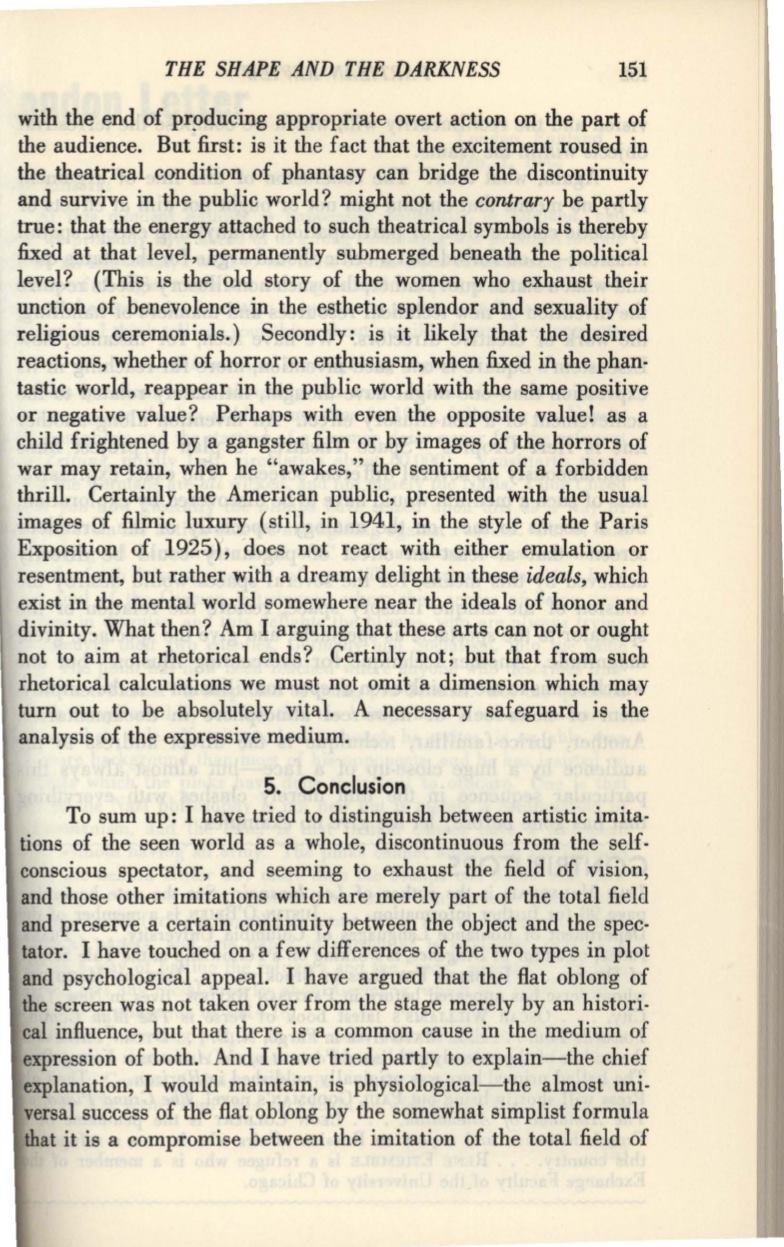
THE SHAPE AND THE DARKNESS
151
with the end of prpducing appropriate overt action on the part of
the audience. But first: is it the fact that the excitement roused in
the theatrical condition of phantasy can bridge the discontinuity
and survive in the public world? might not the
contrary
be partly
true: that the energy attached to such theatrical symbols is thereby
fixed at that level, permanently submerged beneath the political
level? (This is the old story of the women who exhaust their
unction of benevolence in the esthetic splendor and sexuality of
religious ceremonials.) Secondly: is it likely that the desired
reactions, whether of horror or enthusiasm, when fixed in the phan·
tastic world, reappear in the public world with the same positive
or negative value? Perhaps with even the opposite value! as a
child frightened by a gangster film or by images of the horrors of
war may retain, when he "awakes," the sentiment of a forbidden
thrill. Certainly the American public, presented with the usual
images of filmic luxury (still, in 1941, in the style of the Paris
Exposition of 1925), does not react with either emulation or
resentment, but rather with a dreamy delight in these
ideals,
which
exist in the mental world somewhere near the ideals of honor and
divinity. What then? Am I arguing that these arts can not or ought
not to aim at rhetorical ends? Certinly not; but that from such
rhetorical calculations we must not omit a dimension which may
turn out to be absolutely vital. A necessary safeguard is the
analysis of the expressive medium.
5. Conclusion
To sum up: I have tried to distinguish between artistic imita–
tions of the seen world as a whole, discontinuous from the self–
conscious spectator, and seeming to exhaust the field of vision,
and those other imitations which are merely part of the total field
and preserve a certain continuity between the object and the spec–
tator. I have touched on a few differences of the two types in plot
and psychological appeal. I have argued that the flat oblong of
the screen was not taken over from the stage merely by an histori–
cal influence, but that there is a common cause in the medium of
expression of both. And I have tried partly to explain-the chief
explanation, I would maintain, is physiological-the almost uni–
versal success of the flat oblong by the somewhat simplist formula
that it is a compromise between the imitation of the total field of


